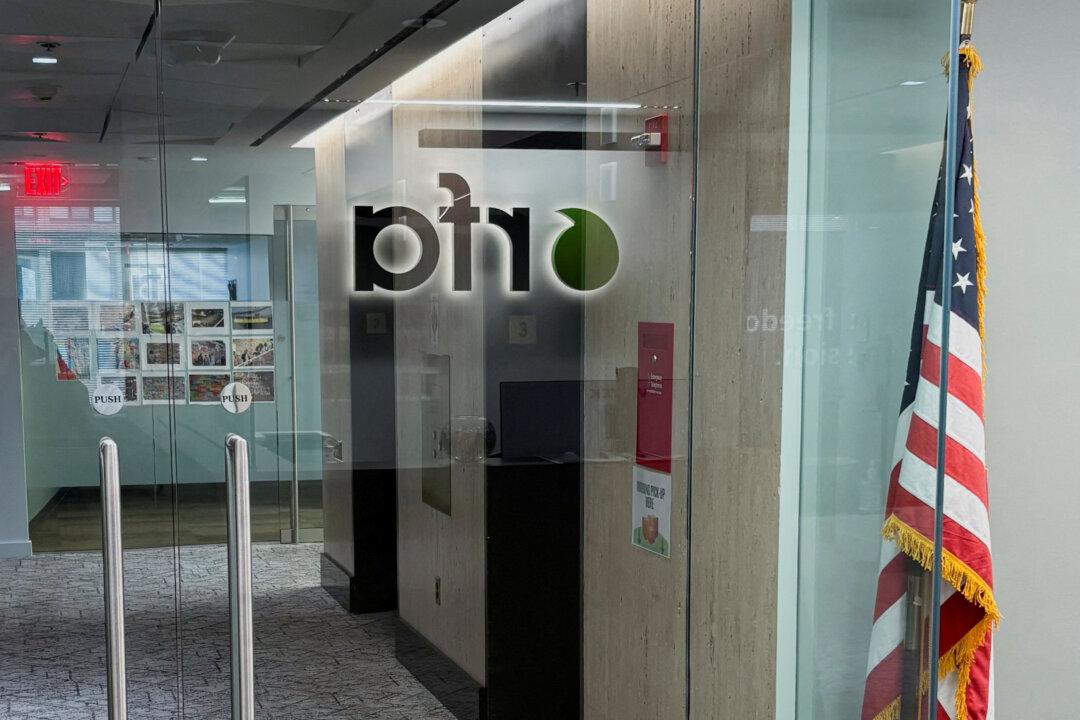Recent studies reveal that China’s massive use of antibiotics has caused serious water and food contamination throughout the country and created a public health crisis. It’s also being exported to the United States, hidden in seafood and chicken.
In June 2006, an infant receiving antibiotic treatment for fungal infection and pneumonia in a hospital in Guangzhou City was found to be infected with a kind of super bacteria resistant to seven types of antibiotics. First-generation cephalosporin turned to be ineffective, second-generation cephalosporin was also ineffective, third and fourth generations, again, failed to do anything.
Doctors then tried the most powerful antibiotics they had available, such as imipenem and cilastatin, cefepime dihydrochloride, but none of them were able to alleviate the symptoms.
Antibiotics in Meat and in the Environment
In the midst of growing public concerns over antibiotic pollution, Dr. Ying Guangguo, a leading researcher of antibiotics at the Guangzhou Institute of Geochemistry, Chinese Academy of Sciences, led a research team all over China to investigate the scale of antibiotics consumption and discharge into the environment. Starting from 2006, the team collected samples from 58 major river systems and major livestock farms in Guangdong, Gongxi, Hunan and Hebei provinces.An “Antibiotics Pollution Map” was produced in June 2015 from the research results. For the first time, the amount of antibiotics consumption in China was disclosed. In 2013 alone, 162,000 tons of antibiotics were consumed in China—52 percent for veterinary, and 48 percent for human treatment.
The researchers mainly focused on 36 types of the most commonly detected antibiotics. The annual consumption of these antibiotics was more than 90,000 tons, of which 84 percent was given to livestock. Most of the antibiotics are eventually excreted by humans and animals. According to their study, every year, more than 50,000 tons of antibiotics were discharged into the environment, with roughly 54 percent ending up in soil and 46 percent in the water system.
The five antibiotics showing the largest pollution presence are, from high to low, amoxicillin, florfeniol, lincomycin, penicillin and norfloxacin. They are all used in the treatment of various bacterial infections.
It can be seen from the pollution map that the more economically-developed regions in China, such as Guangdong, Jiangsu, Zhejiang, Hebei, are the most polluted areas.
When compared with other countries, the total concentration of antibiotics in China’s rivers is much higher. Based on data collected from the 58 major rivers, the average antibiotics concentration is 303 ng/L, compared with 120 ng/L in the U.S., 20 ng/L in Germany and 9 ng/L in Italy.
The most antibiotic-tainted river sample identified by Dr. Ying’s team had a reading of 7,560 ng/L of total antibiotics.
In pig and chicken farms, because of the large numbers of animals, farmers have the habit of adding a variety of antibiotics to the feed to reduce the chances of infectious diseases. Similarly, aquaculture farmers often add antibiotics when feeding fish, shrimp and crab.
According to Dr. Ying, the Pearl River Basin has a high population density, and Guangdong Province has many pig and chicken farms. It also has the highest number of fish ponds in the country. In addition, in rural areas wastewater is usually directly discharged without any treatment. Therefore, the total consumption of antibiotics in the Pearl River Basin is one of the highest in China. And the emission of antibiotics back into the environment in this region is also one of the highest.
Dr. Ying summarized what he found in pigs, poultry, cows and aquaculture farms.
His team detected high concentrations of antibiotics in pig feces, chicken feces, and duck feces. For example, the highest level of an antibiotic detected in pig feces in Pearl River area was tetracycline, with an average concentration of 5.6mg/kg.
A pig farmer in Zhaoqing, Guangdong Province, whose name was not given in the study, told Dr. Ying that for each pig, from birth until it weighs about 260 pounds in approximately seven months, he usually spends 1,300 yuan on feeds and 300 yuan on different veterinary drugs.
“We ourselves are scared about the amount of drug administration, but we have to do it this way when pigs get sick,” the farmer said.
According to Dr. Ying, cow farms also uses antibiotics. “Because cows will get inflammation if they are milked every day,” he explained.
“I used to think free range chickens were not given any antibiotics,” Dr. Ying said. But they are also given large quantities of antibiotics, as the farmers try to make them grow faster and to prevent the outbreak of avian influenza.
Antibiotics in Humans and Drug Resistance
With food and water being so tainted with antibiotics, what happens to humans who eat the meat and drink the water?Between 2014 and 2015, researchers at Shanghai’s Fudan University studied urine samples from more than 1,000 children in eastern China. Among them, 58.3 percent showed at least one type of antibiotic, and some urine samples contained six antibiotics. In addition, some antibiotics that were discontinued in medical treatments many years ago, as well as certain antibiotics administered to livestock and poultry only, were both detected in some urine samples.
Meat and Seafood Exports From China
Starting in 2002, China has become the largest exporter of seafood. In 2017, the total export of aquatic products was 4.34 million tons, at a value of $21.15 billion, according to China’s Ministry of Agriculture and Rural Affairs.The top five importers of China’s fishery products are Japan, the United States, Association of Southeast Asian Nations, the European Union, and Taiwan.
Data from the USDA Foreign Agricultural Service shows that nearly 14 percent of China’s fish and seafood exports have gone to the United States in recent years.
Eighty percent of tilapia and over 50 percent of cod consumed in the United States come from China, the “Made in USA Movement” revealed.
In 2013, the U.S. Department of Agriculture approved the sale of Chinese chicken in America, despite warnings and objections from food safety experts.
But these chicken, fish and seafood imports from China pose health concerns for American consumers because of their high antibiotic levels.





